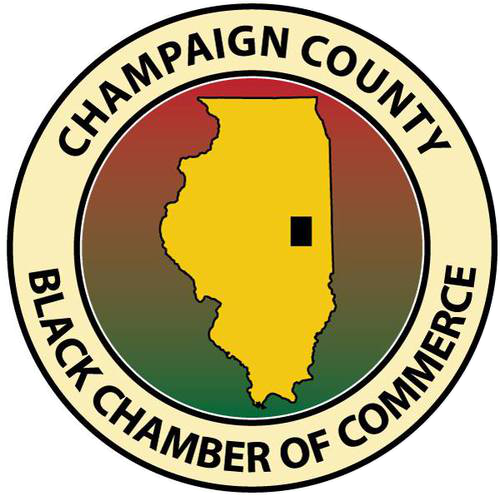I recently performed a major rebalancing of client portfolios who have a Growth, Core or Fully Diversified investment objective, buying and selling a number of holdings so that portfolios would be in line with our views on the market (I will get to that in a bit). Selling a stock holding can be difficult, but as an investor you have to remember that you don’t make any money when you buy a stock – you make it when you sell it. It is very easy to buy a stock at the right price, ride the price up to new highs, then watch as you turn you big winner into a loss. It’s why I tell people that you don’t marry your stocks – its OK to make a change when circumstances say it’s time.
This got me thinking about what stocks were in client portfolios when I started this business in 1991. Unfortunately we changed our computer system sometime in 1998 so I selected 12/31/1998 to look as some accounts and see what sorts of things we owned and what has happened to them since. I chose a performance chart format so we can see how the stock price has done in all these years.
Walmart:
I thought we’d start with one of the survivors (or winners, if you will) of the passage of time
Double click on any image for a full size view
You can see that if you were a patient owner of this stock, you would have done very well over all this time. However, if we were looking at the performance at the end of a decade, you would not have been a happy investor at the end of 2009:
 For 10 years, you earned a whopping 34% return – I’m not sure any investor would be pleased with that return as it basically kept pace with inflation.
For 10 years, you earned a whopping 34% return – I’m not sure any investor would be pleased with that return as it basically kept pace with inflation.
GE, Citigroup, AT&T, Xerox, Del Monte:
Many of the stocks owned in 1998 do not exist today, either because they were merged into another company (e.g., Compaq Computers, Sun Microsystems, Lucent) or because they have gone out of business (Sears, National City Bank). These five companies still exist and I can guarantee you that there are folks that have owned them all of this time.
Yes, there have been some companies that we owned in 1998 that have been huge winners for people, some of them are listed in the merged company list above. But the idea here is that there is no reason to hold onto a stock if you see a catalyst that will likely cause it to flatline in return like the decade-long Walmart chart or to go down in price like GE above.
Why am I telling you this and what does it have to do with the major rebalancing of client portfolios? Excellent question!
We are at an investment fulcrum where I believe the stocks of many of the market leaders since 2008 will likely flatline in price for a period of time (Two years? Ten years? No way to know until you reach another fulcrum).
The cause of this investment fulcrum? Covid, or rather the end of the Covid Recession. This virus will work its way through the population and eventually we will achieve the herd immunity required for it to die out because you will either be vaccinated against it, you will have already had it (like me – it’s one of the reasons you haven’t heard from me on the blog in the past few weeks), or you have a natural immunity to it. As we approach that point, the stock market will look forward and start to revalue the stocks of companies that prosper during economic expansions.
I expect that our economy will move from being stimulated by monetary policy to being stimulated by an infrastructure bill. That infrastructure bill (as long as it goes to actual construction projects – in the past, we have seen state governments take Federal money and spend it elsewhere) will juice the natural growth that comes from an economy opening up again after a recession. The stocks of companies that prosper coming out of a recession are the cyclical value stocks and the domestic-focused small cap stocks.
Over the past several years, I have focused client portfolios on large cap growth stocks and largely avoided value and small cap stocks based upon the economic policies our country adopted coming out of the 2008/2009 recession. The massive monetary stimulus pushed down interest rates to zero and made investing in companies with ever-increasing valuations (i.e., expanding Price to Earnings ratios) make sense. These were the only companies with consistently growing earnings and investors were willing to pay up to own companies with growing businesses.
However, investor face two major problems investing in highly valued large cap growth stocks in an expanding economy, when economic momentum is gaining speed: (1) even if the large cap growth stocks still have expanding earnings, they new have competition of other significantly lower valued companies with significantly lower P/E Ratios whose earnings are growing at the same or higher rates. This means there is less demand from buyers of their stocks at the high valuations so when the supply of people wanting to sell their shares outpaces the demand of buyers, the stock price has to come down; and (2) as interest rates begin to rise those higher rates put pressure on valuation levels. The valuations of companies go down as interest rates go up, even if their earnings continue to grow.
Now, I know you are going to say that interest rates will be low for a long time – you’ve heard it on the news, on internet, just about everywhere – you have even watched the Federal Reserve Chairman on TV telling you so. However, I mean the rates material to corporations that occur in the bond market, not the overnight Fed Funds rate controlled by the Federal Reserve – that rate has been and will likely continue to be held artificially at the zero level for years to come. However the bond market is totally independent of the rates set by the Fed. If demand for capital increases because economic activity increases, and corporate America needs to borrow money to fund its growing business, they will go to the bond market and borrow it from investors. The more demand, the higher the bond market can charge for the borrowing (yet again, supply and demand matter).
Also, as economic activity increases, prices can increase – think of all the businesses that have been nearly shut down or have had to lower their prices just to exist through this recession – once the demand is back for their goods and services and the covid restrictions are eased up, prices will rise. As prices rise at the same time as demand increases for borrowing money, the lenders (in this case the people who buy the corporate bonds) will keep demanding higher and higher yields on the borrowed money so that they achieve purchasing power parity (or more simply, keep the buying power of their money stable despite the inflation).
All of this means that I expect (1) cyclical value stocks whose fates are tied to the economy to outperform growth stocks, and (2) domestically focused small cap stocks to outperform their internationally-focused large cap brethren who are doing business in places that will not likely have a domestic recovery until well after ours is underway. Those growth stocks steady earnings and large cap stocks with an international focus will be valued less by investors because they can buy cheaper value stocks with the same or better earnings growth and small cap stocks with better earnings growth than large cap stocks that are less tied to our economic recovery.
Have I sold all of our large cap growth holdings? Absolutely not – however everything I own for clients has some catalyst or story that gives investors a reason to own them, even if their P/E’s are higher than normal. For the bulk of the large cap growth companies, they will have to grow into their valuations, and that will take time. It is much like what happened to Walmart all those years ago – it went from its high growth stage where investors drove its stock price up faster than its earnings so that its P/E Ratio was well above the median valuation for retail industry. Their price didn’t need to fall, and in fact could increase a bit, but to drive down their P/E Ratio and get the resulting valuation of the company in line with the retail industry, their earnings growth had to far outpace their stock price growth.
Since 2008, the prices of large cap growth stocks grew faster than the earnings grew. When Price was divided by Earnings, the valuation went up as the P got larger relative to the E. Now, we will likely be watching the E grow faster than the P so that the valuation comes down to a level that will once again entice investors. It’s sort of math that you have to pay attention to as an investor, otherwise you get stuck with companies in your portfolio that will cause your returns to suffer.
Investment Strategy
>I have rebalanced client portfolios to reduce economic risk, adding a significant allocation of Value and Small Cap stocks and reduced our allocation of Large Cap Growth stocks so that portfolios are in line with the coming economic expansion.
>Portfolios have a strong domestic bias over foreign to reduce the timing risk of foreign economies not recovering as quickly (or ever) as the US economy.
>Every stock I own in client portfolios has some sort of catalyst that I believe will cause investors to want to own their shares as that catalyst helps to drive their earnings higher.
>To reduce the individual company risk of owning stocks based upon projected earnings growth once the economy starts to recover, I have reduced the position size and increased the number of positions in portfolios.
>To make me sleep better at night owning such a large allocation to value and small cap, the projected earnings growth for the portfolio is > 15% and the projected Return on Equity is 25% (just remember that there is not a direct correlation between these numbers and stock price increases – lots of outside factors influence stock price growth, like whether the supply and demand for the company’s stock is favorable or not, whether the discount rate for corporate earnings is rising or falling, etc. However, as long as earnings and returns are rising at these levels, one major factor in stock price movement is taken care of).
>I have also significantly reduced bond portfolio durations (for clients that are not invested 100% in equities) to protect against interest rate risk, keeping individual bond holdings short-term and bond mutual fund holdings short duration or floating rate.
Note: In coming blog posts I will discuss the catalysts mentioned earlier in this post. To give you preview, though, one of those is the Humanization of Pets. One of the unexpected things to come out of the covid restrictions is an increase in the number of households that own pets. Our society has moved to the point where pets are members of the family who get good food and medical care. With the increase in the number of pets, comes increased demand for quality pet food and medical care. As such, client portfolios own two leaders in the pet pharmaceutical field in client portfolios because of the increased demand for pet medical care.
Have a great weekend!
—Mark








